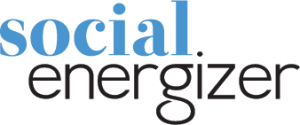SEO
5 Social Media Must Haves
Here are the 5 things every business must do to build a community online and bring in clients via social media. 1. Website It’s your web basecamp, start here. photo © 2006 Grant Kwok | more info (via: Wylio) 2. Blog, forum, or some way of delivering active audience-focused content. I have a few clients…
Read MoreVanity Suffixes For Your Domain, Small Businesses Need Not Apply
This week in Singapore, the Internet Corporation for Assigned Names and Numbers (ICANN), which is the Internet body that oversees domain names, voted to open the control of domain suffixes a.k.a. gTLD (generic top-level domains) like .com, .net, .biz, etc. In the past they have allowed a total of only 22 suffixes. Going forward, companies…
Read MoreWho Should Be Your Next ‘Go To’ Employee?
“So I have a website –now what?” That is the question I often get when a client is asking why the website they either made themselves or ‘had a friend’ design isn’t getting any results. And I mean it –ANY RESULTS. So many small business owners are not getting the point. A website is only…
Read MoreDynamic Websites and What They Mean For Your Small Business
There are a lot of people out there suggesting that a small business owner can create their website overnight. And you can. But will it do what you want it to do? photo © 2007 Ben Zvan | more info (via: Wylio) What exactly do you want it to do? Are you happy with a…
Read MoreImage Basics for Bloggers
Attract their attention When it comes to blogging, we all know that it takes great content to attract attention. Part of this is the written content, but just as important part are the visuals you find to support your words. Yes, the secret is in the pictures. Adding just 2 images can increase the time…
Read MoreHow Small Businesses Get the Most from Social Media
Just how are small businesses using social media? What level of online presence should you have? One way to start is to review what other small business owners are doing and model it after them. Once again our friends at Mashable! have provided some insights in their latest Infographics report. In a nutshell, here’s what…
Read MoreSEO Basics: Get the Most from Keywords
Why do you need Keywords? They lay the foundation for Search Engine Optimization (SEO). And SEO is how you get visitors to your site. It lets people know you exist. Keywords are used by search engines to find a product or service like yours and match it to the customer looking for that. Close your…
Read MoreSEO Explained through Analogies
SEO (Search Engine Optimization) can be daunting stuff. It’s the sort of topic that makes one’s eyes glass over and can put the worst insomniacs to sleep. BUT it is one of the four most important elements to Inbound Marketing and is often not understood. Many consider it the magic behind the curtain. It is…
Read MoreChris Brogans- What is the Focus and Purpose of Your Blog
I was digging through some of my archives and came across this article from Chris Brogan, one of my favorite thought leaders in the social media arena. It is about the focus and purpose of your blog. Chris starts by suggesting that you, “Ask yourself that question: what is the focus and the purpose of my…
Read MoreFirst Steps to Successful Inbound Marketing
So, you’ve watched Socialnomics with Eric Qualman and now you ‘get it’. Haven’t seen it yet? Here it is again. Now, you’re ready to begin the first steps to successful Inbound Marketing. Because traditional marketing will never be the same. It will no longer get you ‘there’. If you want to move your business forward, then…
Read More

